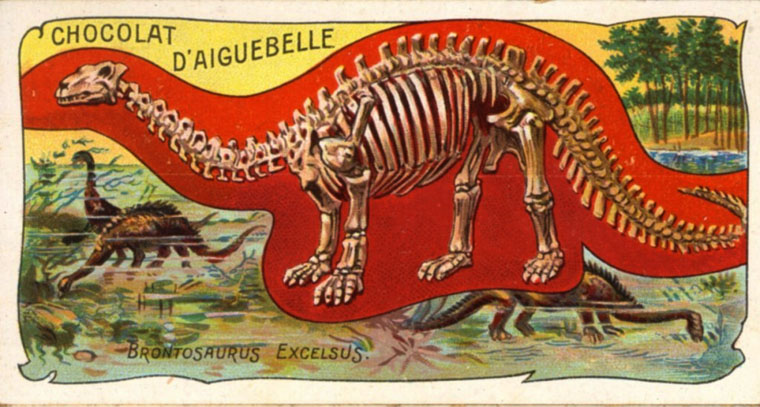A Century Later, Beloved Brontosaurus May Reclaim Its Name
Brontosaurus is back, baby!
Generations of schoolchildren have learned that a massive, long-necked dinosaur called
Brontosaurus once roamed Earth. But in fact, scientists dropped that name more than a century ago -- referring to it as
Apatosaurus instead.
Now,
after a thorough analysis of dozens of long-necked specimens, a team of
British and Portuguese paleontologists says it's time to revive the old
name.
"It's the classic example of
how science works,"
study co-author Dr. Octavio Mateus, a paleontology professor at
Universidade Nova de Lisboa in Portugal, said in a written statement.
"Especially when hypotheses are based on fragmentary fossils, it is
possible for new finds to overthrow years of research."
The backstory. Starting in the 1870s, rival paleontologists
Othniel C. Marsh and
Edward D. Cope were scouring the American West, competing to find new dinosaurs in what became known as the "
Bone Wars."
During
Marsh's digs, his team found two incomplete skeletons of massive,
long-necked sauropods. Based on one of the skeletons, Marsh announced
the discovery of a new dinosaur called Apatosaurus ajax, the "deceptive
lizard" in 1877. Then, two years later, he described the second skeleton
as belonging to another new species called Brontosaurus excelsus, the
"noble thunder lizard."
But after
paleontologists collected a specimen with features similar
to both Brontosaurus and Apatosaurus, they said the two dinosaurs were
too similar to belong to separate genera. And so in 1903, Brontosaurus
was re-classified as Apatosaurus excelsus.
A second look. For the new analysis, the researchers spent five years examining the
scans and fossils of 81 sauropod specimens.
Then they conducted statistical analyses to discover how much the
dinosaurs differed, based on 477 specific features, Scientific American
reported.
"Our research would not have been possible at this
level of detail 15 or more years ago," Dr. Emanuel Tschopp, a
paleontologist who led the research while completing his PhD at the
Universidade Nova de Lisboa, said in the statement.
Read more here





